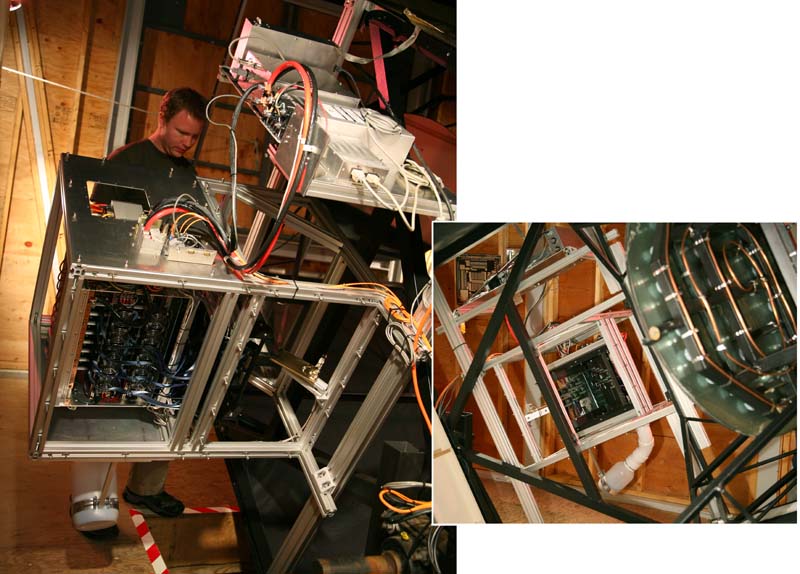Let the Search Begin!
April 11, 2006 -- a gorgeous sunny spring afternoon, and we are finally
up and running with the new all-sky "camera." Here's a shot of the
official ribbon-cutting moment; from left to right, Paul Horowitz
(alpha nerd) and his wife Vida Kazemi, Lou Friedman (Planetary Society),
and Charles Alcock (Harvard College Observatory, with fabulous tie).
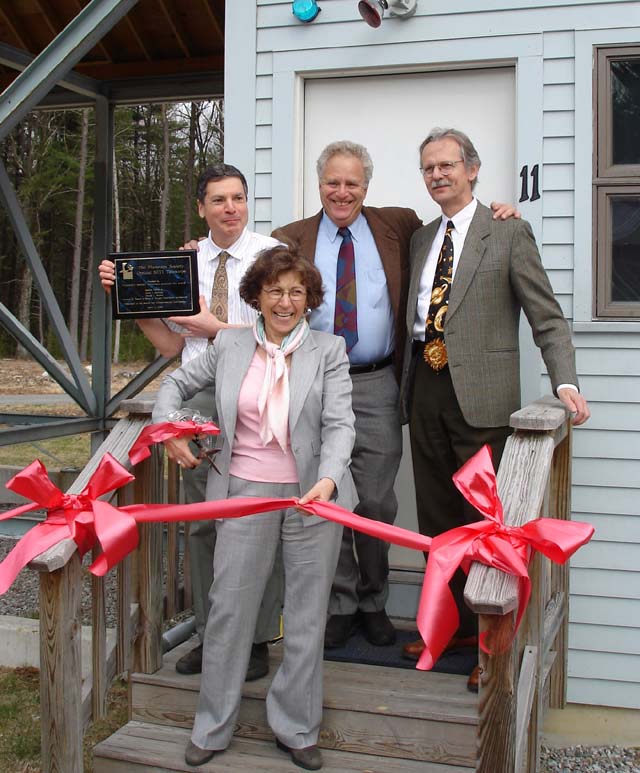
A Look Inside
Here's a shot from the business end of the fully-equipped allsky `scope.
You can see the 70kg "camera" attached to the starboard side of the
telescope; in this shot its sides have been removed, to allow a glimpse
of the electronic and optical innards. That's Andrew and Curtis, looking
a bit sleepless after a few months of all-nighters. This view shows the
primary (looking smaller than its 72" diameter) and secondary (looking
larger than its 36" diameter) mirrors.
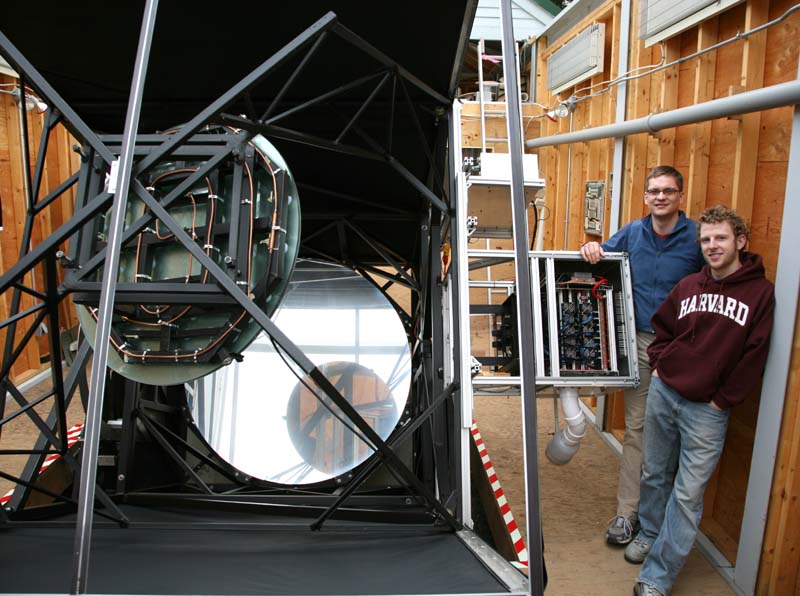
Bird's Eye View
Well, not quite a bird -- we're standing on the roof of the 61" optical
telescope dome. Jason's guarding the door, while Curtis looks lonely
standing next to the telescope, where you can see the large bottle of
dessicant hanging down from the bottom of the detector package. This view
shows the building fully open for business, both roof and "barn doors."
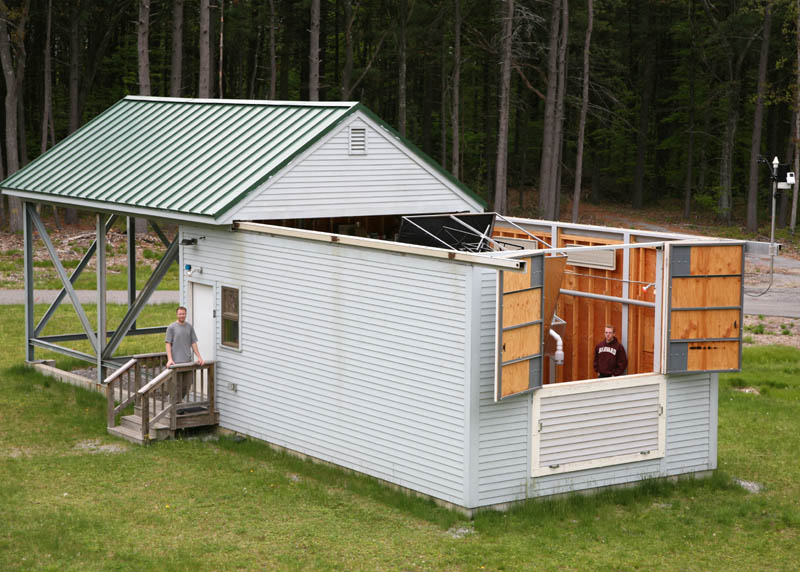
The Detector Package - I (aka "The Camera")
Here's a "photon's eye" shot of the detector, where you can see the
staggered array of 16 nanosecond-speed pixelated photomultiplier tubes
(with black plastic protective caps), plate beamsplitter, and (on the
left) test flasher (aka "The Gelfand Flasher - I"). The latter generates
a short flash of light, to test that all's well.
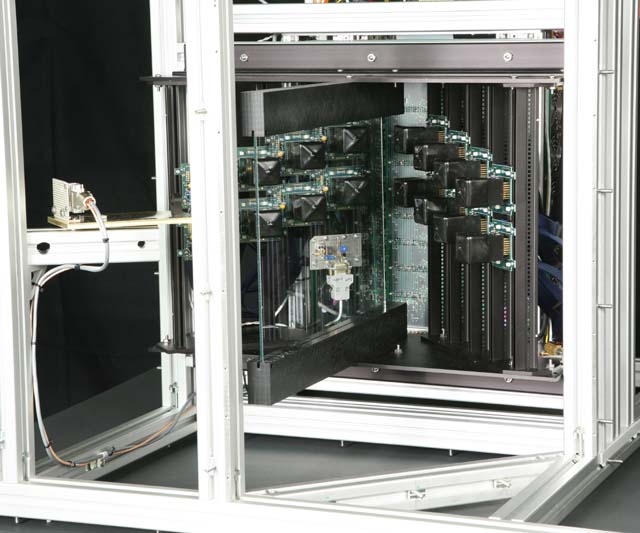
The Detector Package - II
And here's the "backend" array of electronics that makes a trillion
measurements per second (no kidding), in an array of 32 custom chips
designed by Andrew Howard.
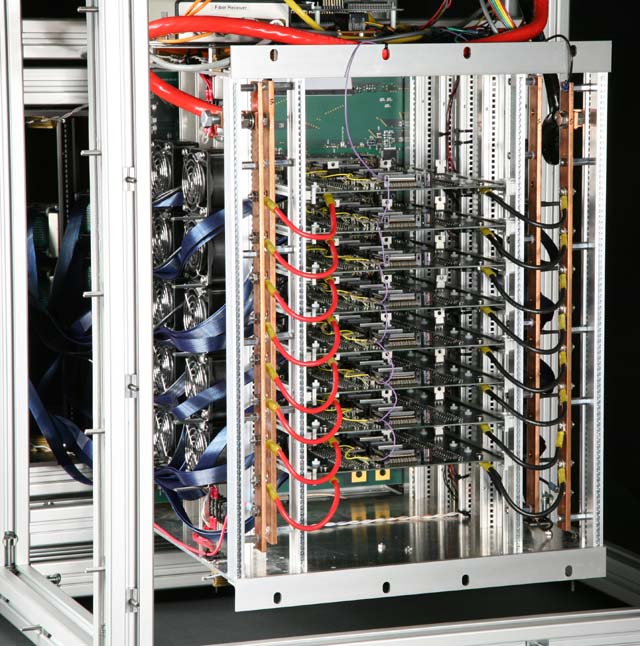
The Detector Package - III
Here's a detail of the circuit boards bottled up inside the camera.
A photomultiplier tube at lower right is plugged into its little circuit
board, complete with high voltage power supply and anode terminators; 16
of these are in the camera. To the left is one of eight "daughterboards,"
with its four custom PulseNet chips, and 128 wideband amplifiers. The
"motherboard" is at top; it accepts the daughters via the white sockets,
and holds a dozen microcontrollers, dual-ported RAMs, and other goodies.
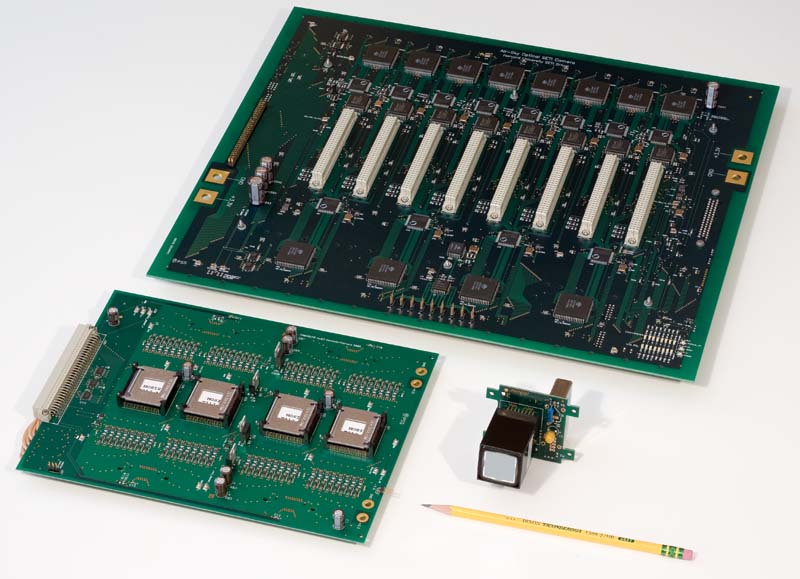
The Detector Package - IV
Here you can see how this puppy hangs on the telescope. The lefthand
picture was taken from the control room roof, looking down and south
(down south?); that's Jason, evidentlt admiring the beauty of this beauty.
The shiny stuff above the camera is the array of power supplies (including
a donated Vicor switcher that provides 50 amps at 3.3V for most of the
bit-pushing that goes on in the electronics); the big red and black cables
are 0 gauge wire, carrying 50A. All data communication is via fiber
optics, for immunity to destructive lightning transients. The inset on
the right is the view from across the telescope.
